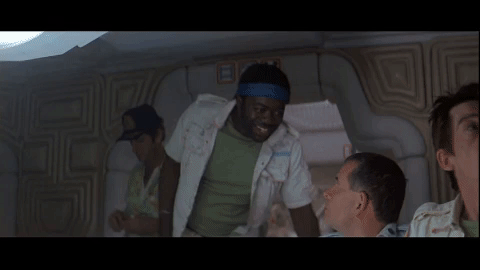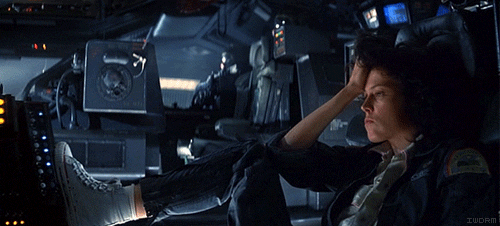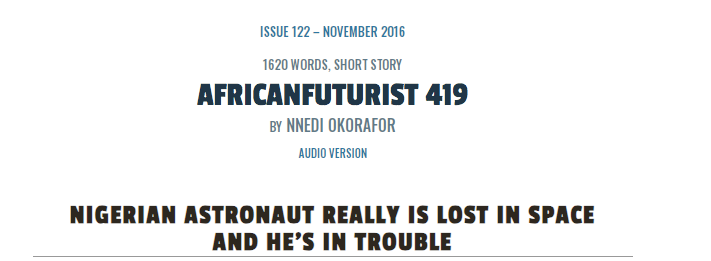Film: Alien (1979), dir. Ridley Scott
Story: “Africanfuturist 419” (2016) by Nnedi Okorafor in Clarkesworld Magazine
Alien is a gorgeously-shot classic of the deep space horror genre set on a ramshackle towing craft with a small, work-a-day crew that are picked off one-by-one by the ever-growing xenomorph they let onboard. Pair it with Nnedi Okorafor “Africanfuturist 419,” a very different story about a man stranded in space with a possibly deadly alien, whose situation is made public when his cousin tries to cash in on his misfortune by turning it into a 419 Nigerian scam.
WATCH, READ, THEN VENTURE FORWARD for spoiler-ful analyses of these texts… if you dare!!!
Alien (1979)
I made my dad watch Alien for the first time while I was doing a rewatch for this, and he was very frustrated by the lack of concern regarding proper quarantine protocols.
“They let him on the ship?? He’s got a squid on his face!” he shouted, shaking his head.
“They’re not even wearing n95 masks!” he exclaimed while the crew examined the facehugger on Kane’s face.
“This thing,” he said, “it’s way smarter than you, it’s way better than you, just run!” He sighed. “And you let it in…”
(It may go without saying, but my dad is not a big horror movie watcher, so he was refreshingly unaccustomed to watching characters throw themselves headfirst into life-threatening situations.)
Some of the best parts of Alien are its set and character design. The crew’s ship feels grungy and old, in sharp contrast to the sleek, hi-tech designs common in other scifi of that time, like Star Trek or Star Wars. The ship’s name, Nostromo, means something like either “boatswain” or “our man” (a corruption of “nostro uomo”) in Italian; an appropriate name for a commercial hauler and its work-a-day crew, who perform their tasks with both efficiency and a little resentment, often chatting or cracking jokes while they tighten valves or enter data. Because of this, the world of Alien feels more familiar and lived in than many other sci fi properties; the characters and their exasperations and goals are immediately recognizable and relatable.
H.R. Giger’s design of the xenomorph (meaning, of course, “strange form,” but also alluding to the various changes this species undergoes rapidly as part of its development) is sparingly shot, with the largest form often appearing in shadow. The actor who played the full grown xenomorph, Nigerian arts student Bolaji Badejo, was 6’10,” and the suit consisted of 10-15 discrete pieces to allow for the alien’s strange movements.
One last thing I want to touch on quickly is that, when alien was written, all of the characters were considered “unisex,” which allowed them to be played by actors of any gender. Sigourney Weaver’s Ripley, of course, became a fast icon, in part because she was able to play a fully developed role.
“Africanfuturist 419” by Nnedi Okorafor
Like the crew of the Nostromo, this story’s protagonist, Nigerian astronaut Abacha Tunde has been abandoned by his higher-ups on a space craft with an alien. This story, however, is told mainly from Earth, and follows the publicity that grows around Tunde’s predicament after his cousin tries to cash in on it by using Abacha’s struggles as the backstory for a 419 scam.
Read More!
“The Making of ‘Alien’ was a Chest-Bursting Mess” by Chris Sasaguay for Collider
“The Hidden Truth Behind the Casting Process of Ridley Scott Movie ‘Alien’” by Thomas Leatham for Far Out
If you like the story, check out Nnedi Okorafor’s Desert Magicians duology! (Book one, Shadow Speaker, was released in September, and book two, Like Thunder, comes out in November!)










